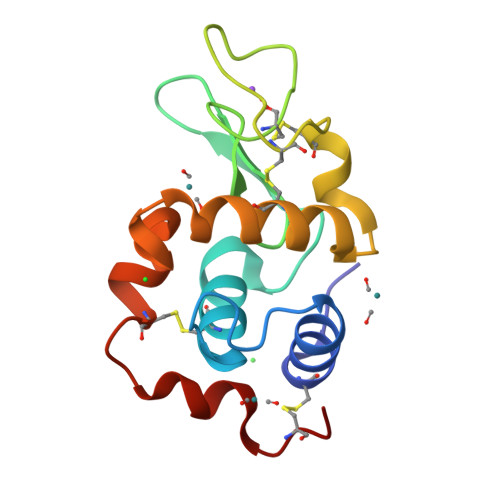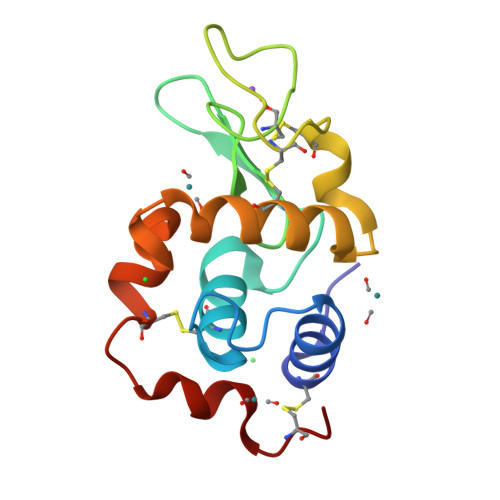Corm-3 Reactivity Toward Proteins: The Crystal Structure of a Ru(II) Dicarbonyl-Lysozyme Complex.
Santos-Silva, T., Mukhopadhyay, A., Seixas, J.D., Bernardes, G.J., Romao, C.C., Romao, M.J.(2011) J Am Chem Soc 133: 1192
- PubMed: 21204537
- DOI: https://doi.org/10.1021/ja108820s
- Primary Citation of Related Structures:
2XJW - PubMed Abstract:
CORM-3, [fac-Ru(CO)(3)Cl(κ(2)-H(2)NCH(2)CO(2))], is a well-known carbon monoxide releasing molecule (CORM) capable of delivering CO in vivo. Herein we show for the first time that the interactions of CORM-3 with proteins result in the loss of a chloride ion, glycinate, and one CO ligand. The rapid formation of stable adducts between the protein and the remaining cis-Ru(II)(CO)(2) fragments was confirmed by Inductively Coupled Plasma-Atomic Emission Spectroscopy (ICP-AES), Liquid-Chromatography Mass Spectrometry (LC-MS), Infrared Spectroscopy (IR), and X-ray crystallography. Three Ru coordination sites are observed in the structure of hen egg white lysozyme crystals soaked with CORM-3. The site with highest Ru occupancy (80%) shows a fac-[(His15)Ru(CO)(2)(H(2)O)(3)] structure.
Organizational Affiliation:
REQUIMTE-CQFB, Departamento de Química, FCT-UNL, 2829-516 Caparica, Portugal.




















